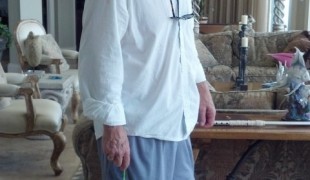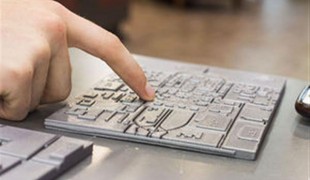- 3823
- 358
- 10
- 8
- 0
- Help Ukraine
About the solution
Omar first contacted with visually impaired people when he was a child. He visited an orphanage with his father, in India, and there he saw how difficult social independence can be for the visually impaired.
“In India, they don’t really have the infrastructure to help these kids go through their daily lives. I saw what a struggle it was for them, especially compared to the sighted kids,” he explained.
Six years later, the inventor met a visually impaired student and saw him struggle with an unfamiliar environment. “He was anxious and I realised there has to be some way I can alleviate these issues for them”, Omar revealed.
Being a tech enthusiast since he was in fifth grade, he set out to create Helping Hand, a glove that enables wearers to point to an object and press one of three buttons on the pointer finger to identify objects, faces or text. The glove incorporates a minicomputer, a battery pack, camera and an audio output source (headphones or speakers).
“So during the summer I went online, learned the various artificial intelligence algorithms, read different research papers on artificial intelligence and computer vision, and set out to build the device. What’s really crazy is that a lot of these algorithms weren’t even available two years ago,” the inventor noted.
Since the original design, Omar has also created a handheld device and glasses. This second version has greater accuracy and speed, it’s more ergonomic, it can recognise 500 objects and it also has a panorama feature. Additionally, the facial recognition feature can be trained to recognize 400 different faces and is nearly instantaneous.
The student came up with this second version after testing the first device and got the feedback, from blind users, that it relied heavily on the sense of touch.
According to the developer, there are similar products to his Helping Hand on the market, but they are costly ($4,500 to Shareef’s $50) and often cumbersome. Also, this device can function without WiFi, meaning that anyone anywhere can “see” with their hands.
Omar founded Second Sight, a non-profit that aims to empower visually impaired and blind people via technology.
Adapted from: https://bit.ly/2XzfP6D
This solution shall not include mention to the use of drugs, chemicals or biologicals (including food); invasive devices; offensive, commercial or inherently dangerous content. This solution was not medically validated. Proceed with caution! If you have any doubts, please consult with a health professional.
DISCLAIMER: This story was written by someone who is not the author of the solution, therefore please be advised that, although it was written with the utmost respect for the innovation and the innovator, there can be some incorrect statements. If you find any errors please contact the patient Innovation team via info@patient-innovation.com
-
-
485
-
0
-
5832

Student builds googles to help visually impaired people identify hurdles
-
-
-
733
-
0
-
10691

Assistive walking device
WALKING: Walking
WALKING WITH A WALKING AID: Walking with a walking aid
BODY BALANCE: Maintaining body balance
Body-Worn solutions (Clothing, accessories, shoes, sensors...)
App (Including when connected with wearable)
Assistive Daily Life Device (to help ADL)
Walking Aid (wheelchair/walker/crutches)
Loss of balance
Frequent falls
Restoring mobility
Regaining sensory function
Managing Neurological Disorders
Recovering from Traumatic Injuries
Maintaining Balance and Mobility
Preventing (Vaccination, Protection, Falls, Research/Mapping)
Neurology
Physical Medicine and Rehabilitation
Mobility issues
Solutions for Disabled people
United States
-
-
-
755
-
4
-
15606

Blind girl creates campus map for the visually impaired
-
 en
en